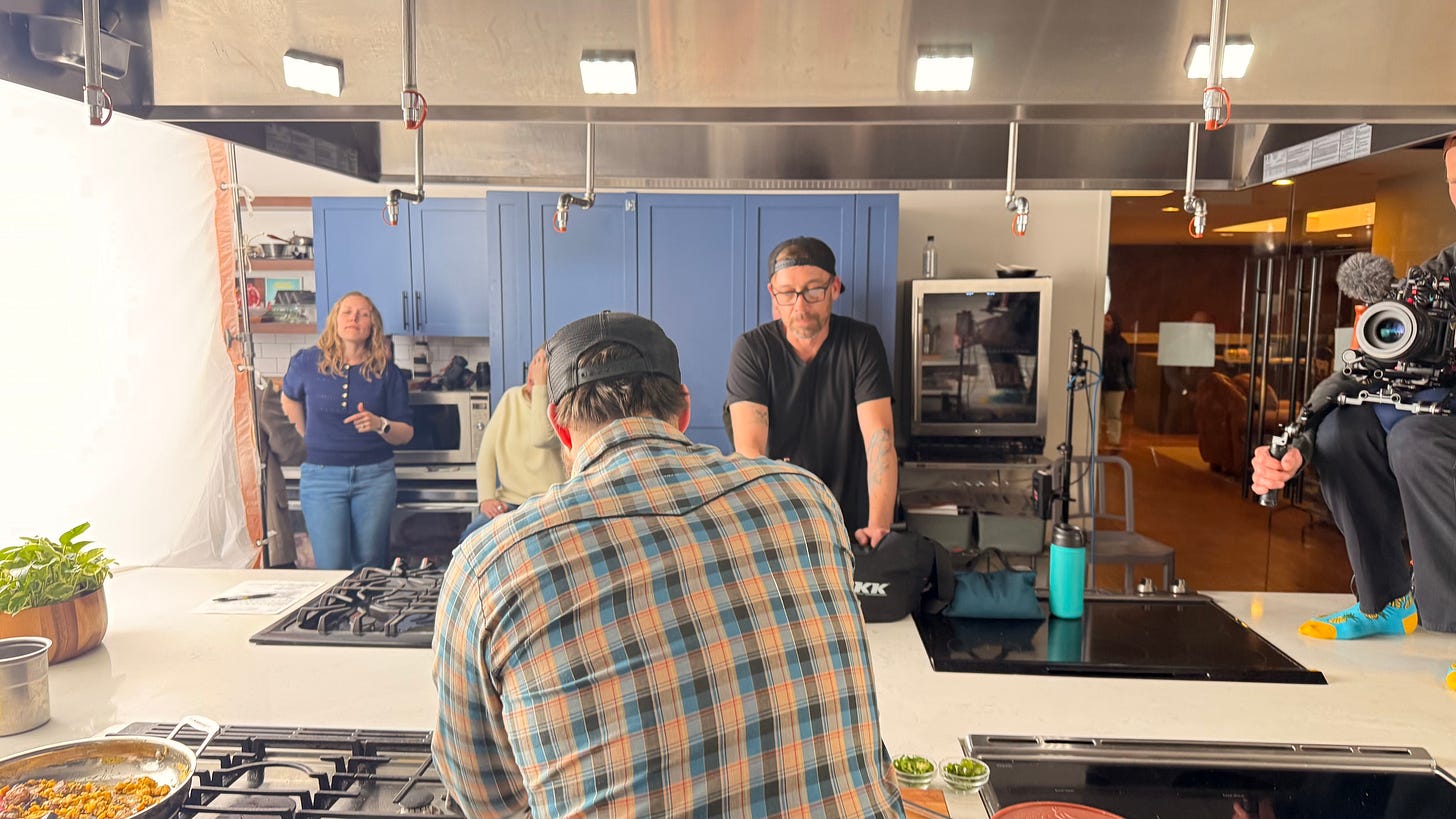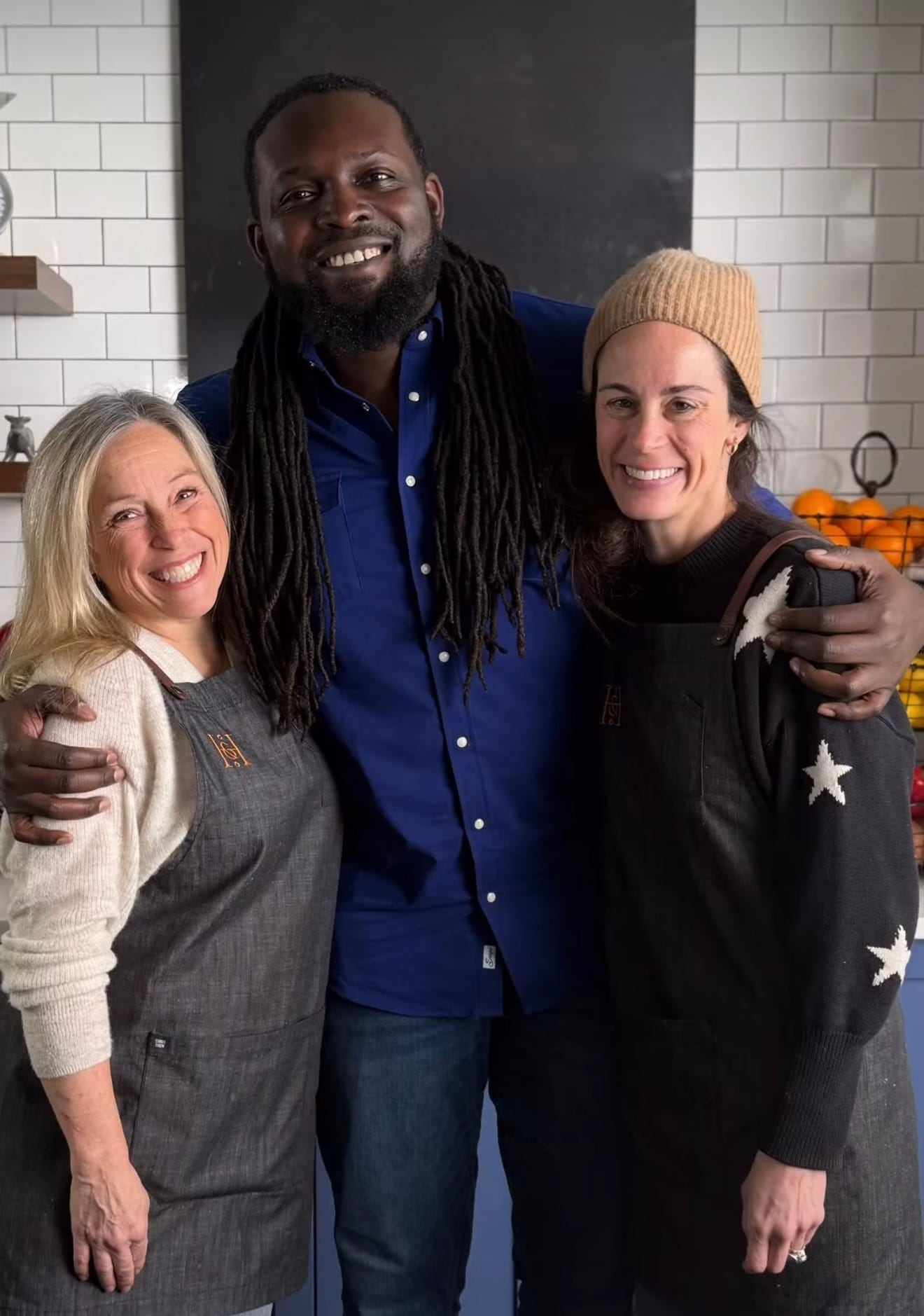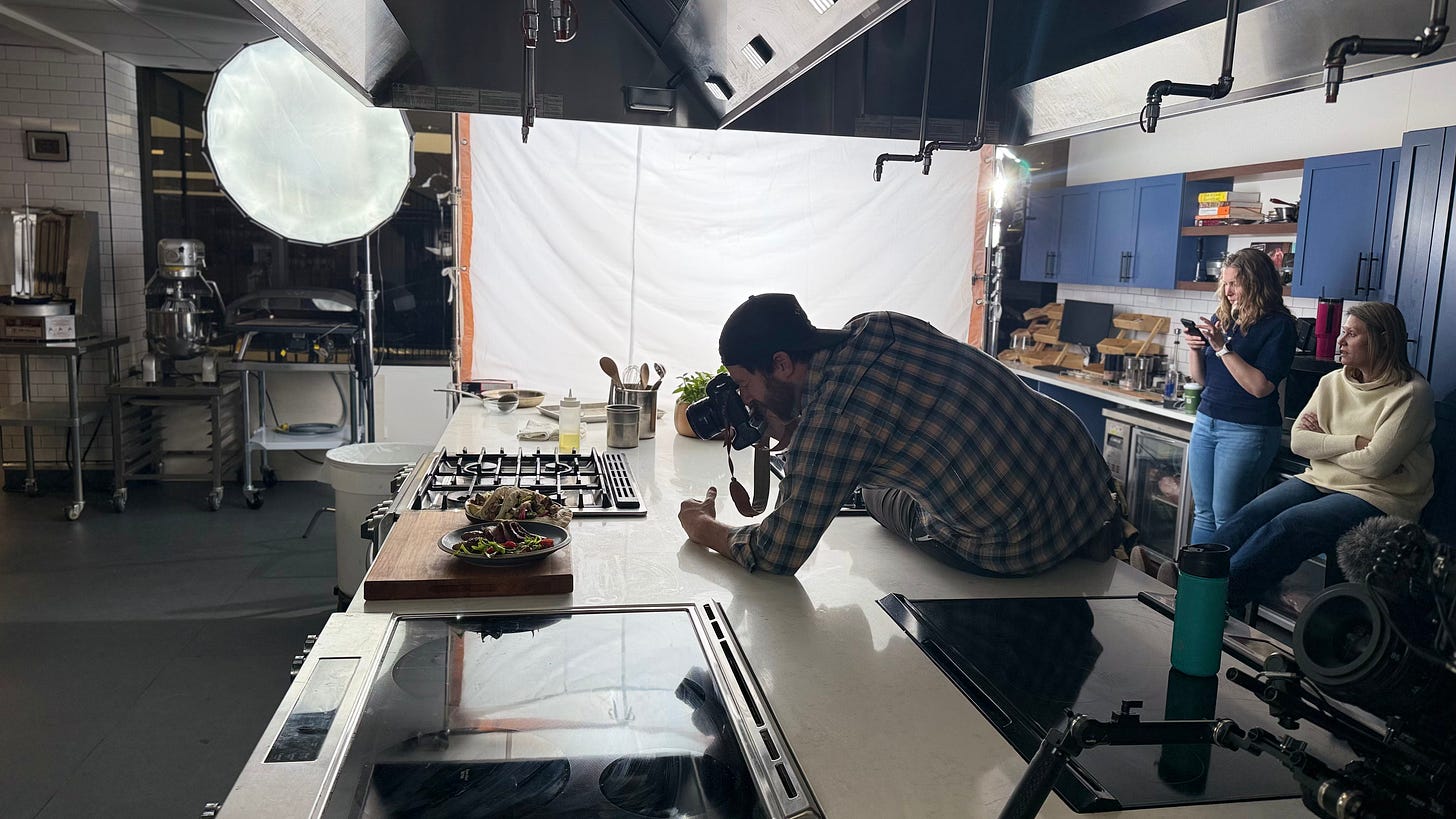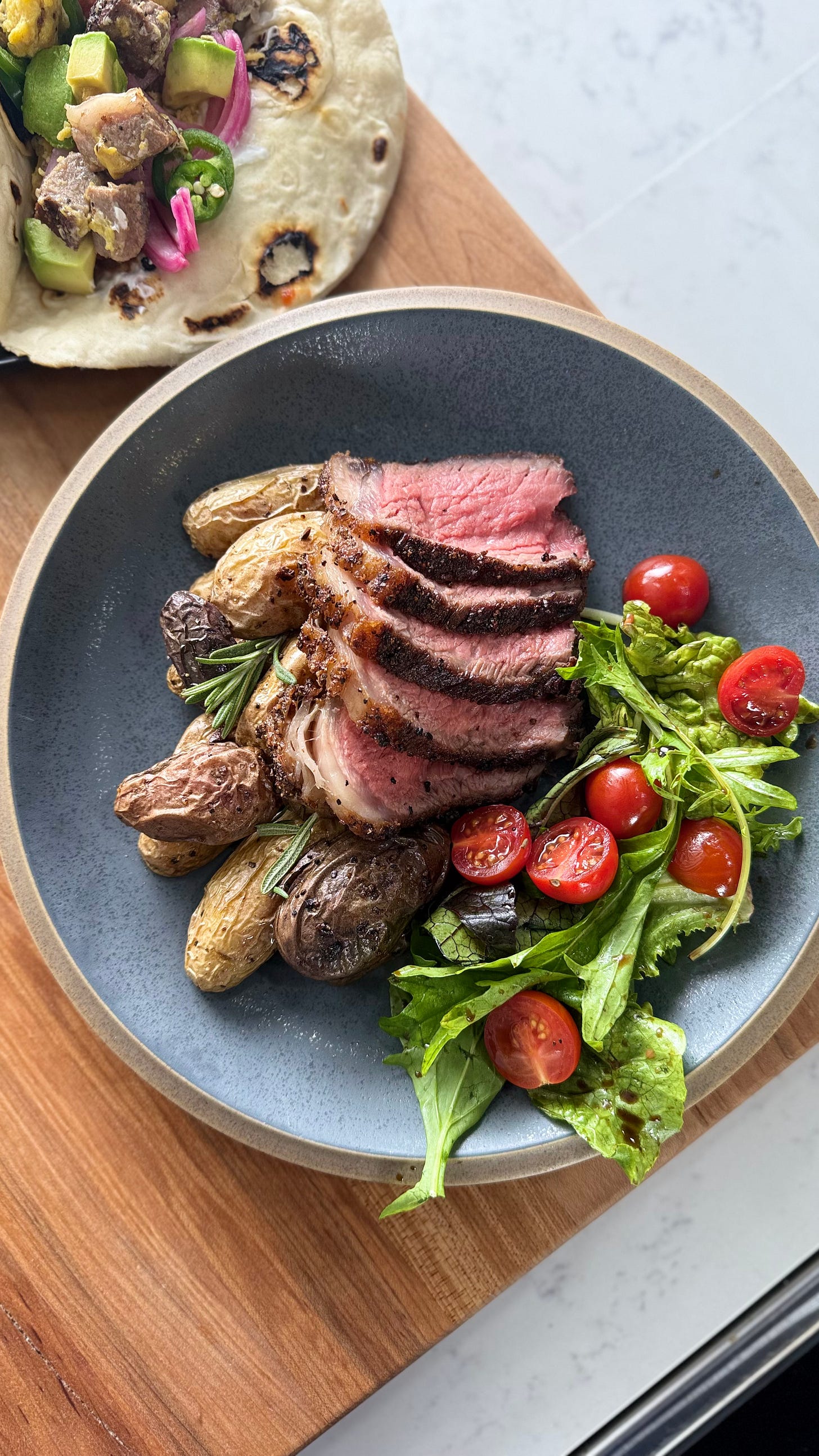Behind the Scenes of a Culinary Commercial: Crafting Stories Beyond the Plate
From Concept to Camera: The Art, Strategy, and Teamwork Behind Filming a Culinary Commercial
In the glossy world of food commercials—where a single steak sizzle can sell an idea, and the glisten of sauce can stop a scroll—there’s an intricate dance that happens long before the cameras roll. It’s a process of precision and creativity, a balancing act between culinary authenticity and the clean, compelling visuals that brands crave. Capturing the perfect shot involves meticulous planning, culinary expertise, and a collaborative spirit that brings the vision to life.
When I was brought on to film a commercial for a major brand, the real work began months before the shoot day. There’s this misconception that food commercials are spontaneous—a chef walks onto set, throws some ingredients together, and voila, cinematic magic. The truth? It’s far more layered. The magic on screen is a result of countless hours of preparation, recipe development, and coordination between various teams.
The journey kicks off with a culinary brief, the blueprint for everything that follows. It’s a document that lays out the core concept, the target audience, and the intended emotional response. It serves as the guiding star for the entire project, ensuring that everyone involved is aligned with the brand's vision and goals. In this case, the directive was simple but thoughtful: create elevated dishes that encourage home cooks to “make more of their meal” by repurposing a single protein—beef, specifically NY strip steak. The goal was to inspire viewers to think beyond the initial meal and see the potential for leftovers in creating delicious and satisfying dishes.
With the brief in hand, I sat down to draft a range of recipe concepts. This involved brainstorming creative ways to use the NY strip steak in multiple dishes, showcasing its versatility and appeal. I approached it like curating a playlist—each dish designed for a different level of home cook, from the beginner experimenting with flavors to the seasoned grill master looking for a new twist. The key? Keep it accessible but compelling, giving viewers the confidence to recreate it at home without losing the aspirational edge that draws people in. The recipes needed to be both achievable and inspiring, striking the perfect balance to resonate with the audience.
Once the brand approved the final recipe, the wheels really started turning. This is where people often underestimate just how much planning goes into a single day of filming. It’s not just about grabbing the ingredients—it’s a full-scale operation. Every element that could appear on camera needs to be accounted for: knives, cooking utensils, cutting boards, the exact right shade of napkin to make the steak pop against the plate. The goal is to create a visually appealing and cohesive aesthetic that complements the food and enhances the overall message.
Thankfully, I had Beth and her team—absolute pros who handle food styling and prop sourcing like artists. They’re the kind of people who can look at a table setting and immediately know if the plate is too glossy or the fork’s shadow falls too heavy. They have an eye for detail and a deep understanding of how to present food in a way that is both appetizing and visually stunning.
It’s a team sport, through and through. On sets like these, ego has no place. Everyone—from the culinary lead to the camera operator—plays a vital role in making the final product shine. Collaboration and communication are essential to ensure a smooth and successful shoot.
Before the shoot, there are the standard pre-production calls—usually one or two—where we iron out logistics, troubleshoot potential hiccups, and ensure that by the time we step onto set, no detail has been left floating. These calls are crucial for aligning everyone's expectations and addressing any concerns before the filming day.
Then comes the big day. The energy on set is palpable as everyone gears up for the shoot.
I always start with a quick rundown of the recipe and a final check of supplies. Then it’s a huddle with the director, who shares the overarching vision for the commercial—the emotional beats we need to hit, the energy they want to capture. There’s no script per se, which is how I prefer it. Instead, there’s a loose framework, with key talking points I need to touch on, but the actual dialogue? That’s all freestyle. This allows for a more natural and authentic delivery that resonates with the audience.
For me, keeping it light and authentic is the priority. Audiences can smell forced enthusiasm from a mile away. I like to laugh on set, make sure the crew’s enjoying themselves—because if there’s no fun in the process, what’s the point? A positive and enjoyable atmosphere on set translates to a more genuine and engaging performance on camera.
As the cameras start rolling, it’s a blend of precision and play. The NY strip steak hits the pan, that first sizzle filling the room, and suddenly everyone’s locked in. There are the classic food commercial tricks—brushing on extra oil for shine, tweaking angles to make the sear look just right—but there’s also real cooking happening. I’m not about smoke and mirrors. The steak gets flipped, rested, sliced, and plated—all of it real. The goal is to showcase the food in a way that is both visually appealing and authentic to the cooking process.
Before long, the day winds down. We’ve got the shots we need. The steak’s been captured in all its juicy glory. The team starts packing up lights and cameras, but there’s still this lingering energy in the air—like we just pulled off something special. There's a sense of accomplishment and camaraderie that comes from working together to create something beautiful and impactful.
Filming a commercial like this is a reminder that the work we do in food media goes far beyond recipes and plating. It’s about telling stories, about creating something that lingers in a viewer’s mind long after the 30-second spot ends. It's about evoking emotions, inspiring creativity, and showcasing the beauty and artistry of food.
And if you can have a few good laughs along the way? Even better. Because at the end of the day, food is about bringing people together, and that includes the team behind the scenes.






